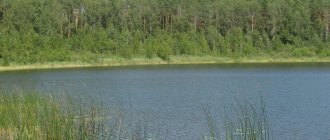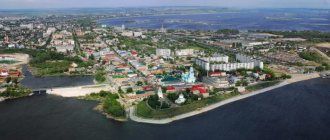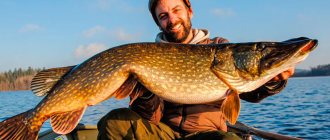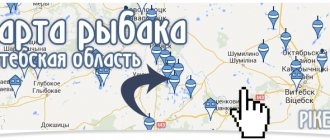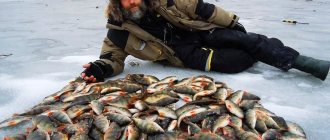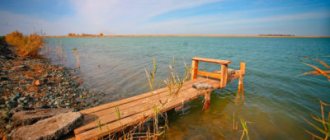How to get there
To get from Moscow to the river located on the border between Russia and Belarus, you need to move in a southwestern direction. To reach the upper reaches of the Iput, you need to take the A130 Moscow - border with Belarus highway (along the Old Kaluga Highway). To get to the river in its middle and lower reaches, it is better to leave Moscow along the M3 "Ukraine" highway; in the Bryansk area you need to turn onto the Orel - Smolensk highway to get to the middle reaches. To get to the most “fishy” places of Iput, in the Bryansk region you need to turn onto the A240 Bryansk - Krasny Kamen highway, leading to the Novozybkovsky and Zlynkovsky districts. After crossing the border with Belarus, this road turns into the M-10 highway, leading all the way to Gomel.
If desired, you can reach the river from Moscow by rail. Daily train 075B Moscow – Gomel departs from Belorussky Station at 15:24. Along the way, the train makes stops at stations located on the banks of the Iput:
- in Vyshkov (Zlynka station);
- in Dobrush;
- in Gomel.
Ticket prices:
- 1300 RUR in a reserved seat carriage, 2600 RUR in a compartment to Zlynka;
- 2600 RUR in a reserved seat, 5500 RUR in a compartment car to Gomel.
Weather and climate
The river is located in a temperate continental climate with warm summers and relatively cold winters. The river basin is located in an area with moderate air humidification - the average annual precipitation is 500 - 600 mm per year, precipitation is evenly distributed throughout the year, but the largest amount falls with summer showers.
The source and mouth of the Iput, located in Belarus, are characterized by a higher average annual temperature than the average course of the river, which lies in the Russian Federation. In the Mogilev region the average annual temperature is +6 °C, for Gomel +7.4 °C, while in the Smolensk region of the Russian Federation it is only +5.4 °C, for the Bryansk region - from +5.5 °C to +6 °C.
Winter in the river basin begins in mid-November; by the end of the month, the first ice cover forms on Iput. Winter lasts about 155 days, the coldest month of the year is January with an average monthly temperature from -8 °C in the middle reaches to -4.5 °C in Gomel. By the end of winter, the thickness of the ice cover reaches 40 centimeters.
Spring in the river basin begins in mid-April, when the average daily temperature reaches +5 °C. Clearing of ice in the lower reaches of the river begins at the end of March, in the middle reaches - in the first ten days of April. By the middle of the month, the snow cover disappears completely, and then the spring flood begins, during which up to 70% of the annual flow occurs. During floods, the water level in Iput rises by 3-4 meters.
Summer in the river basin begins in the third ten days of May, when the average daily temperature exceeds +15 °C. The hottest month of the year is July with an average daily temperature from +18 °C in the Smolensk region to +19.9 °C in Gomel. Climatic autumn in the Iput basin begins at the same time as the calendar autumn in early September. This month is usually clear and sunny, but towards the end of September the first frosts occur. During the subsequent period before winter (until mid-November), the weather is cloudy with prolonged rains.
Invitation to partnership
The tournament organizers invite everyone to participate in partnership.
Given the wide coverage of the event in the press, the Internet and on television, all our partners will be able to organize their own advertising campaign. Considering the mass nature of the event, advertising of the goods produced and provided will be able to reach the end user located far beyond the borders of the Bryansk region. An important factor is the sociability of sports fishing enthusiasts, who constantly have a wide, ageless circle of acquaintances who are fans of this type of sports recreation. All participants of the fishing forum on the Iput River have all the information capabilities of the tournament organizers at their disposal.
Contact information is posted on VKontakte in the group https://vk.com/fishingclub32, contact phone number 8-919-292-76-57 Artem.
Here you can also familiarize yourself with the registration procedure, summing up the results, tournament schedule and organizational events.
When is the best time to go
The best time to go on vacation to the Iput River is from May to the end of September, when summer continues in the river basin or there is a golden autumn. The second period (for winter fishing) is the time from December to mid-March, when a strong ice cover forms on the river. The worst months to visit the river can be considered the end of November - the beginning of December, when the ice is not yet strong, as well as the period of spring floods.

Fishing on the Iput River in winter, spring, summer, autumn
Fishing on the Iput River is possible in two neighboring countries, in Belarus, these are the Mogilev and Gomel regions. And in Russia, Smolensk and Bryansk regions. The species composition of fish here is the same: pike, perch, soda, asp, chub, roach, bream, silver bream, bleak, gudgeon, ruff and others.
Fishing on the Iput River in Belarus is possible in the following areas and regions: Gomel region, and Gomel region, Dobrush region. It is in Gomel that the mouth where the Iput flows into the Sozh is located. In this place there are interesting places for catching predators with a spinning rod. On summer evening dawns you can often see an asp fighting here. But it’s a bit difficult to catch him; he won’t let him get close. Fish often migrate here, especially in spring a lot of roach and bream come from the Sozh River.
Fishing on Iput in Russia in the Smolensk and Bryansk regions, the Surazh region where the dam is located. In Russia, fishing is a little more popular, since most of the river flows here. Spinning fishing is possible both from the shore and from a boat. The width of the river, although wide in some places, is still possible to reach promising riverside edges. A retractable leash is most suitable for catching perch. This type of equipment can be cast far, while using small baits.
Feeder fishing on the Iput River is also a success. You need to choose places with sufficient depth and a hard bottom. Roach, bream, crucian carp, silver bream, and rudd will hang here. Although the latter also likes to stay in creeks and quiet reaches where the coastal zone of the river has aquatic vegetation. Feeder rods are used mainly in the medium and light class, the weight of the feeders is 20-40 grams. Baits used include maggots, worms, and pearl barley.
Tributaries of the river
In total, the Iput has several dozen tributaries. The left tributaries are more numerous and full-flowing than the right ones. The largest of them include:
- Unecha (105 km);
- Nadva (96 km);
- Voronus (92 km);
- Voronitsa (74 km);
- Khoroput (45 km).
Geographical information
Iput is the longest and deepest left tributary of the Sozh River.
The length of the river is 437 km, the drainage basin area is 10,900 km². The banks are mostly low-lying. The slope is 0.2 m/km. The current is flat.
Food mainly comes from snow. The river freezes at the end of November and opens at the end of March - beginning of April.
The river valley is trapezoidal, the width at the source is 1-1.5 km, below 2.5-3.5 km, in the area from the city of Surazh to the mouth 4-8 km. The river bed is weakly branched and very winding in places. The banks are steep and precipitous. The left bank is generally flatter and lower.
The floodplain is two-sided, alternates in places along the banks, the width in the upper reaches is from 1.5 to 12 m, in the rest of the area it is 20-50 m. During high water, the average excess of water level over low-water is 3-4 m.
On the slopes of the valley, the first terrace above the floodplain, 5-10 meters high, and the second terrace, 16-22 meters high, are developed. On parts of the surface of the floodplain and both terraces there are peat bogs.
The river basin is located on the western slope of the Central Russian Upland and in the northern part of the Dnieper Lowland and borders on the east and south with the basin of the Desna River (a tributary of the Dnieper), and on the west with the basin of the Besed River. In the upper reaches the landscape is hilly, the rest of the area is a rugged flat plain, 27% under forest.
In the cities of Surazh and Dobrush on Iput, hydraulic structures (dams) were erected.
The largest settlement in the upper reaches of the river is the village of Ershichi - the center of the Ershichi district of the Smolensk region. In the middle reaches of the Iput is the city of Surazh. Here, on the tributaries of the river, other regional centers of the Bryansk region are located: the cities of Klintsy, Novozybkov, Unecha, Mglin, Zlynka, the urban-type settlement of Kletnya and the village of Gordeevka. In the lower reaches of the Iput on the territory of Belarus there are the cities of Dobrush - the center of the Dobrush region and Gomel - the center of the Gomel region.
The left tributaries of the Iput are more numerous, longer and deeper than the right ones. This is explained by the narrowness of the watershed between Iput and Besed, flowing to the west in the same direction. The longest tributaries of the Iput are: Unecha - 105 km, Nadva - 96 km, Voronusa - 92 km, Voronitsa - 74 km.
Nature
The flora and fauna of Iput are rich and diverse. 27% of the river basin lies in the area of forests, primarily in the northern part of the Bryansk region. In the Kletnyansky district of the Bryansk region, between the tributaries of the Voronus and Nadva, there is the Kletnyansky nature reserve, part of which are floodplain oak groves and open forests. In addition to oaks, on the banks of the Iput there are pine, spruce and mixed forests.
The floodplain forests and swamps of the Iput and its tributaries are habitat for rare species of fauna. Among the mammals, there are representatives of the order of rodents: the family of beavers (common beaver), nutria and mice. Other mammal species include marten, mink, otter and other species. Rare species living in the Iput basin include lynx, brown bear, badger, elk, wild boar, and ermine. The pride of the Iput basin is the Russian muskrat that lives here - a rare endemic species that is on the verge of extinction .
Representatives of the class of birds are even more diverse in the river basin. Black grouse, wood grouse, hazel grouse, storks, cranes, eagle owls, various species of woodpeckers, falcon and other species live here.
The ichthyofauna of Iput is also rich and diverse, although in general it is typical for water bodies of the European part of Russia. Among the numerous species of fish living here one can note ide, roach, bleak, bream, burbot, silver carp, etc.
Summarizing
Fishing has remained a constant hobby for many men for many years. There are a lot of reservoirs in the Bryansk region, but Lake Bezdonnoye and the Iput River are especially popular. These two reservoirs contain quite a large number of fish. Perch fishing is popular on Lake Bezdonnoe. But quite often other fish are caught on the hook. For example, these are pike, pike perch, bream, crucian carp and other types of fish. There are places in this lake where the depth reaches seven meters. These holes are home to a small number of catfish. A huge number of fishing enthusiasts come to the territory of these two reservoirs every year in order to hook their biggest trophy.
Fishing on the river
The Iput River is one of the best places for fishing in the Bryansk region and neighboring regions of Belarus. The best place for fishing is considered to be the lower reaches of the river, especially areas near the village of Vyshkov, Zlynkovsky district, in the Novozybkovsky and Gordeevsky districts of the Bryansk region, as well as on the territory of Belarus in the Dobrushsky district.
Iput is convenient for fishing both using a boat and for shore fishing. Both float rods and feeders are used. In the summer, feeding is usually carried out; in the autumn months, you can fish on Iput without feeding, since the bite is sufficient without it.
Basically, anglers choose large white fish of the carp family as their fishing object: roach, ide, bream, silver carp, rudd. Among the predatory fish species, the object of fishing is pike, which bites well on live bait - young roach, crucian carp, and rudd. The optimal size of live bait is no more than 10 centimeters. Interesting features of pike behavior noted by local fishermen include the fact that a large individual prefers to peck at small bait and vice versa. This behavior is typical not only for the summer-autumn period, but also for winter, and for any species of fish.
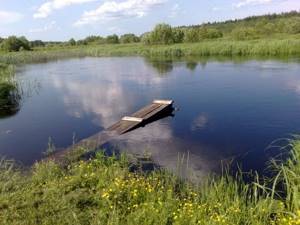
Fish biting forecast on the Iput River
| Weather forecast and fish bite | Calendar, from 02/16/2021 to 02/19/2021 | |||||||||||
| VT | SR | Thu | PT | |||||||||
| Times of Day | Evening | Night | Morning | Day | Evening | Night | Morning | Day | Evening | Night | Morning | Day |
| Cloudiness, precipitation | Partly cloudy | Partly cloudy | Mainly cloudy | light snow | light snow | light snow | Partly cloudy | Partly cloudy | Mainly cloudy | Partly cloudy | Clear | Partly cloudy |
| Temperature °C | -16 | -16 | -15 | -13 | -8 | -12 | -19 | -19 | -11 | -19 | -22 | -22 |
| Pressure, mm. | 771 | 768 | 765 | 763 | 762 | 762 | 762 | 763 | 766 | 771 | 773 | 774 |
| Direction, | West wind | Wind southwest | Wind southwest | Wind southwest | Wind southwest | West wind | North wind | North wind | North wind | North wind | North wind | West wind |
| wind speed | 3 m/s | 4 m/s | 5 m/s | 4 m/s | 4 m/s | 2 m/s | 2 m/s | 3 m/s | 4 m/s | 3 m/s | 2 m/s | 1 m/s |
| According to the forecast, they will bite on: bloodworms crucian carp | 50% | 0% | 55% | 55% | 45% | 0% | 45% | 45% | 30% | 0% | 45% | 60% |
| According to the forecast, the fish will bite on: live bait (jigs), winter spinners, balancers Pike | 50% | 10% | 75% | 75% | 65% | 25% | 45% | 45% | 50% | 0% | 45% | 60% |
| According to the forecast, they will bite on: bloodworms, winter spoons, balance beams Perch | 60% | 0% | 65% | 65% | 55% | 0% | 55% | 55% | 40% | 0% | 55% | 70% |
| According to the forecast, they will bite on: bloodworms, maggots, bark beetles, burdocks Chub | 50% | 30% | 60% | 45% | 40% | 20% | 50% | 35% | 20% | 10% | 50% | 55% |
| Bait: maggot, bloodworm Bream | 50% | 65% | 50% | 40% | 40% | 55% | 40% | 30% | 20% | 45% | 40% | 50% |
| Bait: maggot, bloodworm Roach | 50% | 0% | 75% | 65% | 55% | 0% | 55% | 45% | 40% | 0% | 55% | 60% |
| Bait: maggot, bloodworm Bleak | 50% | 0% | 50% | 50% | 40% | 0% | 50% | 50% | 30% | 0% | 50% | 60% |
Sights and interesting places
Iput is one of the centers of ecological tourism in the Bryansk region. In addition to the above-mentioned Kletnyansky reserve, one can note the ornithological territory “Priiputsky Heights” in the Klintsovsky district of the region - a nesting place for rare species of birds, such as the black stork, egret and serpent eagle.
A significant part of the Iput basin lies within Starodubshchina, a historical region with a complex history located in the west of the Bryansk region. Along with Russians, Belarusians and Ukrainians, Starodubshchina has been inhabited by numerous Old Believers since the 17th century. They founded many villages, settlements and cities in the region. One of these settlements is Zlynka, which lies several kilometers from the Iput riverbed near the village of Vyshkov. The Old Believers brought here the tradition of wooden architecture, characteristic of the Russian north and the central part of the Russian Federation. Wood carvings decorating the facades of houses received particular development. In the same Zlynka, almost the entire housing stock is represented by wooden houses, so when walking along the streets of the city, you can come across many mansions and huts worthy of the best examples of wooden architecture in Murom, Semenov or Gorodets.
Novozybkov is the main city in the western part of the Bryansk region with the largest number of attractions. Like Zlynka, it was founded by Old Believers and subsequently became the center of the Novozybkovsky Consent - a church organization of Old Believers-priests. This city has preserved many architectural monuments associated with the Old Believers, including several stone and wooden churches of the 18th-19th centuries. The city itself lies less than 10 kilometers from the Iput riverbed, so it is convenient to stop there when traveling to the river.
The borders of three states – Russia, Belarus and Ukraine – converge in the Iput basin. Lying on the banks of the Iput, the Belarusian regional center of Dobrush is famous for its Friendship Monument - a monument symbolizing the unbreakable ties of three kindred peoples.
Gomel, the largest city located on Iput, also has considerable tourism potential. The main attraction of Gomel is the Rumyantsev-Paskevich Palace - a wonderful example of Russian classicism, created by several architects throughout the 19th century.
Sights of the Iput River - the longest water artery in Belarus
The total length of Iput is 476 km, the basin area is almost 11 thousand km2. The Iput is the largest tributary of the Sozh, belongs to the Dnieper basin and carries its waters to the Black Sea. The river is characterized by hilly terrain in the upper reaches and flat terrain in the middle reaches and at the mouth. There are many rural settlements and several cities on the river:
- Suraj;
- Vyshkov;
- Dobrush;
- Gomel.
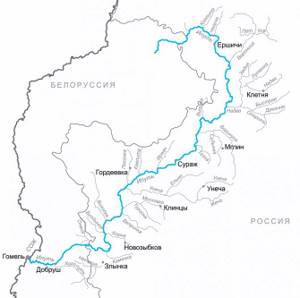
How to get there
To get from Moscow to the river located on the border between Russia and Belarus, you need to move in a southwestern direction. To reach the upper reaches of the Iput, you need to take the A130 Moscow - border with Belarus highway (along the Old Kaluga Highway). To get to the river in its middle and lower reaches, it is better to leave Moscow along the M3 "Ukraine" highway; in the Bryansk area you need to turn onto the Orel - Smolensk highway to get to the middle reaches. To get to the most “fishy” places of Iput, in the Bryansk region you need to turn onto the A240 Bryansk - Krasny Kamen highway, leading to the Novozybkovsky and Zlynkovsky districts. After crossing the border with Belarus, this road turns into the M-10 highway, leading all the way to Gomel.
If desired, you can reach the river from Moscow by rail. Daily train 075B Moscow – Gomel departs from Belorussky Station at 15:24. Along the way, the train makes stops at stations located on the banks of the Iput:
- in Vyshkov (Zlynka station);
- in Dobrush;
- in Gomel.
Ticket prices:
- 1300 RUR in a reserved seat carriage, 2600 RUR in a compartment to Zlynka;
- 2600 RUR in a reserved seat, 5500 RUR in a compartment car to Gomel.
Weather and climate
The river is located in a temperate continental climate with warm summers and relatively cold winters. The river basin is located in an area with moderate air humidification - the average annual precipitation is 500 - 600 mm per year, precipitation is evenly distributed throughout the year, but the largest amount falls with summer showers.
The source and mouth of the Iput, located in Belarus, are characterized by a higher average annual temperature than the average course of the river, which lies in the Russian Federation. In the Mogilev region the average annual temperature is +6 °C, for Gomel +7.4 °C, while in the Smolensk region of the Russian Federation it is only +5.4 °C, for the Bryansk region - from +5.5 °C to +6 °C.
Winter in the river basin begins in mid-November; by the end of the month, the first ice cover forms on Iput. Winter lasts about 155 days, the coldest month of the year is January with an average monthly temperature from -8 °C in the middle reaches to -4.5 °C in Gomel. By the end of winter, the thickness of the ice cover reaches 40 centimeters.
Spring in the river basin begins in mid-April, when the average daily temperature reaches +5 °C. Clearing of ice in the lower reaches of the river begins at the end of March, in the middle reaches - in the first ten days of April. By the middle of the month, the snow cover disappears completely, and then the spring flood begins, during which up to 70% of the annual flow occurs. During floods, the water level in Iput rises by 3-4 meters.
Summer in the river basin begins in the third ten days of May, when the average daily temperature exceeds +15 °C. The hottest month of the year is July with an average daily temperature from +18 °C in the Smolensk region to +19.9 °C in Gomel. Climatic autumn in the Iput basin begins at the same time as the calendar autumn in early September. This month is usually clear and sunny, but towards the end of September the first frosts occur. During the subsequent period before winter (until mid-November), the weather is cloudy with prolonged rains.
When is the best time to go
The best time to go on vacation to the Iput River is from May to the end of September, when summer continues in the river basin or there is a golden autumn. The second period (for winter fishing) is the time from December to mid-March, when a strong ice cover forms on the river. The worst months to visit the river can be considered the end of November - the beginning of December, when the ice is not yet strong, as well as the period of spring floods.
Tributaries of the river
In total, the Iput has several dozen tributaries. The left tributaries are more numerous and full-flowing than the right ones. The largest of them include:
- Unecha (105 km);
- Nadva (96 km);
- Voronus (92 km);
- Voronitsa (74 km);
- Khoroput (45 km).
Nature
The flora and fauna of Iput are rich and diverse. 27% of the river basin lies in the area of forests, primarily in the northern part of the Bryansk region. In the Kletnyansky district of the Bryansk region, between the tributaries of the Voronus and Nadva, there is the Kletnyansky nature reserve, part of which are floodplain oak groves and open forests. In addition to oaks, on the banks of the Iput there are pine, spruce and mixed forests.
The floodplain forests and swamps of the Iput and its tributaries are habitat for rare species of fauna. Among the mammals, there are representatives of the order of rodents: the family of beavers (common beaver), nutria and mice. Other mammal species include marten, mink, otter and other species. Rare species living in the Iput basin include lynx, brown bear, badger, elk, wild boar, and ermine. The pride of the Iput basin is the Russian muskrat that lives here - a rare endemic species that is on the verge of extinction .
Representatives of the class of birds are even more diverse in the river basin. Black grouse, wood grouse, hazel grouse, storks, cranes, eagle owls, various species of woodpeckers, falcon and other species live here.
The ichthyofauna of Iput is also rich and diverse, although in general it is typical for water bodies of the European part of Russia. Among the numerous species of fish living here one can note ide, roach, bleak, bream, burbot, silver carp, etc.
Fishing on the river
The Iput River is one of the best places for fishing in the Bryansk region and neighboring regions of Belarus. The best place for fishing is considered to be the lower reaches of the river, especially areas near the village of Vyshkov, Zlynkovsky district, in the Novozybkovsky and Gordeevsky districts of the Bryansk region, as well as on the territory of Belarus in the Dobrushsky district.
Iput is convenient for fishing both using a boat and for shore fishing. Both float rods and feeders are used. In the summer, feeding is usually carried out; in the autumn months, you can fish on Iput without feeding, since the bite is sufficient without it.
Basically, anglers choose large white fish of the carp family as their fishing object: roach, ide, bream, silver carp, rudd. Among the predatory fish species, the object of fishing is pike, which bites well on live bait - young roach, crucian carp, and rudd. The optimal size of live bait is no more than 10 centimeters. Interesting features of pike behavior noted by local fishermen include the fact that a large individual prefers to peck at small bait and vice versa. This behavior is typical not only for the summer-autumn period, but also for winter, and for any species of fish.
Sights and interesting places
Iput is one of the centers of ecological tourism in the Bryansk region. In addition to the above-mentioned Kletnyansky reserve, one can note the ornithological territory “Priiputsky Heights” in the Klintsovsky district of the region - a nesting place for rare species of birds, such as the black stork, egret and serpent eagle.
A significant part of the Iput basin lies within Starodubshchina, a historical region with a complex history located in the west of the Bryansk region. Along with Russians, Belarusians and Ukrainians, Starodubshchina has been inhabited by numerous Old Believers since the 17th century. They founded many villages, settlements and cities in the region. One of these settlements is Zlynka, which lies several kilometers from the Iput riverbed near the village of Vyshkov. The Old Believers brought here the tradition of wooden architecture, characteristic of the Russian north and the central part of the Russian Federation. Wood carvings decorating the facades of houses received particular development. In the same Zlynka, almost the entire housing stock is represented by wooden houses, so when walking along the streets of the city, you can come across many mansions and huts worthy of the best examples of wooden architecture in Murom, Semenov or Gorodets.
Novozybkov is the main city in the western part of the Bryansk region with the largest number of attractions. Like Zlynka, it was founded by Old Believers and subsequently became the center of the Novozybkovsky Consent - a church organization of Old Believers-priests. This city has preserved many architectural monuments associated with the Old Believers, including several stone and wooden churches of the 18th-19th centuries. The city itself lies less than 10 kilometers from the Iput riverbed, so it is convenient to stop there when traveling to the river.
The borders of three states – Russia, Belarus and Ukraine – converge in the Iput basin. Lying on the banks of the Iput, the Belarusian regional center of Dobrush is famous for its Friendship Monument - a monument symbolizing the unbreakable ties of three kindred peoples.
Gomel, the largest city located on Iput, also has considerable tourism potential. The main attraction of Gomel is the Rumyantsev-Paskevich Palace - a wonderful example of Russian classicism, created by several architects throughout the 19th century.
Tips for tourists
The Iput is a calm, quiet river with fairly clear water and shallow depths, so it is suitable not only for fishing, but also for river swimming. The best beaches on Iput are located in the Novozybkovsky district near the village of Perevoz and the village of Muravinka, as well as near the village of Vyshkov and the village of Dobrodeevka in the Zlynkovsky district.
The path is often used by lovers of active entertainment for kayaking and catamarans. Every year in the Bryansk region a youth festival “Along the Waves of Iput” is held. It takes place in several stages on the territory of Surazhsky, Gordeevsky, Klintsovsky and Novozybkovsky districts. On the opening day of the festival in Surazh, everyone can freely ride on a catamaran provided by the festival administration.
Iput is a river located in the border regions of Russia and Belarus. This is one of the main rivers in the region, loved by fishermen for their good catches and ordinary tourists for the calm nature and almost virgin nature of its banks.
Source: https://snovadoma.ru/
Tips for tourists
The Iput is a calm, quiet river with fairly clear water and shallow depths, so it is suitable not only for fishing, but also for river swimming. The best beaches on Iput are located in the Novozybkovsky district near the village of Perevoz and the village of Muravinka, as well as near the village of Vyshkov and the village of Dobrodeevka in the Zlynkovsky district.
The path is often used by lovers of active entertainment for kayaking and catamarans. Every year in the Bryansk region a youth festival “Along the Waves of Iput” is held. It takes place in several stages on the territory of Surazhsky, Gordeevsky, Klintsovsky and Novozybkovsky districts. On the opening day of the festival in Surazh, everyone can freely ride on a catamaran provided by the festival administration.
Iput is a river located in the border regions of Russia and Belarus. This is one of the main rivers in the region, loved by fishermen for their good catches and ordinary tourists for the calm nature and almost virgin nature of its banks.
Features of fishing on Lake Bezdonnoye in 2016
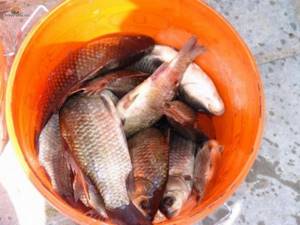
Lake Bezdonnoe is located in the Zhukovsky district of the Bryansk region. In some places the depth of this lake reaches twenty meters. This reservoir is famous for its very large number of fish. It contains a lot of bream, silver bream, crucian carp, perch, roach and other fish. It is quite rare that a pike perch or sterlet is caught on a hook. Perch fishing is especially popular among the local population. As a rule, it gets lost on hills. Which border on fairly large depths. Please note that fish release times may be very short.
In this regard, all fishing takes place at a fairly fast pace. Also, perch can change its parking place quite often. When fishing on this lake, fairly thick fishing lines are used. These fishing lines will not let you down if an impressively sized pike perch or pike takes a perch bait. During the winter, local fishermen use a small spoon. And only in the summer do they believe that the larger the spinner, the better. Due to the fact that the lake has quite large depths, you have the opportunity to use a spinning rod for fishing, on which a benchmark will be hung or a twister on a regular jig head. Particular attention is paid to the choice of bait.
It is recommended that the head have the lowest possible weight. It is no more than five grams. Fishing with this bait is slightly reminiscent of fishing with regular lures. The lighter the head you choose, the better the elastic will play. Such bait becomes as tempting as possible for such predatory fish as perch, pike and pike perch.
